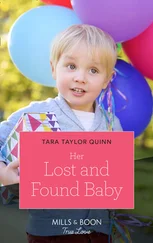Who will establish? Teacher, classroom staff Who will monitor? Teacher, classroom staff
Communication provisions:
Communication between teacher and parents will be facilitated by the use of the weekly log communicating how successful TJ is in solving high-priority unsolved problems.
Implementation:
A Behavior Intervention Plan (BIP) will be generated by the team —comprised of many of the actions described in the second half of this FBA—to support these goals and help improve TJ's school functioning.
_______________________________
School Psychologist
Figure 3.1 CPS-Flavored Functional Behavior Assessment (FBA)
“I was skeptical about CPS. I have a very intense behavioral background. I was steeped in the whole routine of applying consequences for undesirable behavior and rewarding positive behavior. So CPS was like learning a whole new language for me. It was like discovering that the sky was purple; I didn't realize that there was another world out there. At first, I really struggled. I wanted to be able to embrace it, but it just didn't make sense. Eventually I found it productive to question my old beliefs and practices. I think having a disabled child myself, and having him go through school, helped to change my perspective. I forbade his school from giving him time‐outs; I didn't want him to be punished for things related to his neurologically based condition—things that stickers and punishment weren't going to change. So I think having my son helped me see other kids with concerning behaviors through different lenses. But one of the biggest hurdles is that even today, teachers are being trained to use carrots and sticks as their primary classroom management tools.”
—SUSAN, EDUCATIONAL TECHNICIAN
Question:What do we say to the well‐behaved kids when they observe that their behaviorally challenging classmates are being treated differently or aren't receiving the consequences that are usually applied to misbehavior?
Answer:We point out the reality. The consequences weren't working very well anyway. You're working hard on the problem and intend to keep everyone safe. Fair doesn't mean equal. In every classroom, different kids are being treated differently, according to their needs, and that approach benefits everyone, including the well‐behaved students. Behavioral differences should be handled no differently than academic differences.
“These kids who are receiving endless consequences … they often feel like the world is out to get them. So they project that they don't care. But they didn't get to the point of not caring overnight, so I wouldn't expect that we're going to solve all of their problems overnight either. I mean, you've got to work with them for a while.”
—TOM, SUPERINTENDENT
Question:Isn't it important to know the cause of the student's concerning behavior? I mean, that's what we spend a lot of time talking about in our meetings.
Answer:The field of developmental psychopathology tells us that the same concerning behavior can be caused by a variety of different risk factors (a concept known as equifinality). The list of risk factors is pretty long, but includes trauma, exposure to substances in utero, premature birth, brain injury, and environmental deprivation. In many meetings, those causal factors are a primary focal point of discussion. But the reality is that we can't really establish the cause of a student's difficulties with great precision. And, often, we can't do much about those factors now anyway. What should we be talking about instead? Lagging skills and unsolved problems.
By the way, the same risk factor can give rise to a variety of different concerning behaviors (a concept known as multifinality). The list of concerning behaviors is pretty long, too, but includes behaviors that I refer to as lucky (for example, whining, pouting, sulking, withdrawing, crying) and unlucky (for example, screaming, swearing, hitting, kicking, spitting, biting, destroying, and running). You don't want to take those categories too seriously, except for one thing: caregivers are far more likely to respond with empathy, nurturance, and support with lucky behaviors than with unlucky behaviors. But, as you now know, whether lucky or unlucky, the behavior is communicating the same thing: there's an expectation the student is having difficulty meeting.
“That's one of the biggest things that came out of implementing CPS in my school: many classroom teachers had no idea that they could have this powerful impact with kids through the relationships they were building with them and the problem‐solving discussions they were having with them.”
—SUSAN, PRINCIPAL
Конец ознакомительного фрагмента.
Текст предоставлен ООО «ЛитРес».
Прочитайте эту книгу целиком, купив полную легальную версию на ЛитРес.
Безопасно оплатить книгу можно банковской картой Visa, MasterCard, Maestro, со счета мобильного телефона, с платежного терминала, в салоне МТС или Связной, через PayPal, WebMoney, Яндекс.Деньги, QIWI Кошелек, бонусными картами или другим удобным Вам способом.












